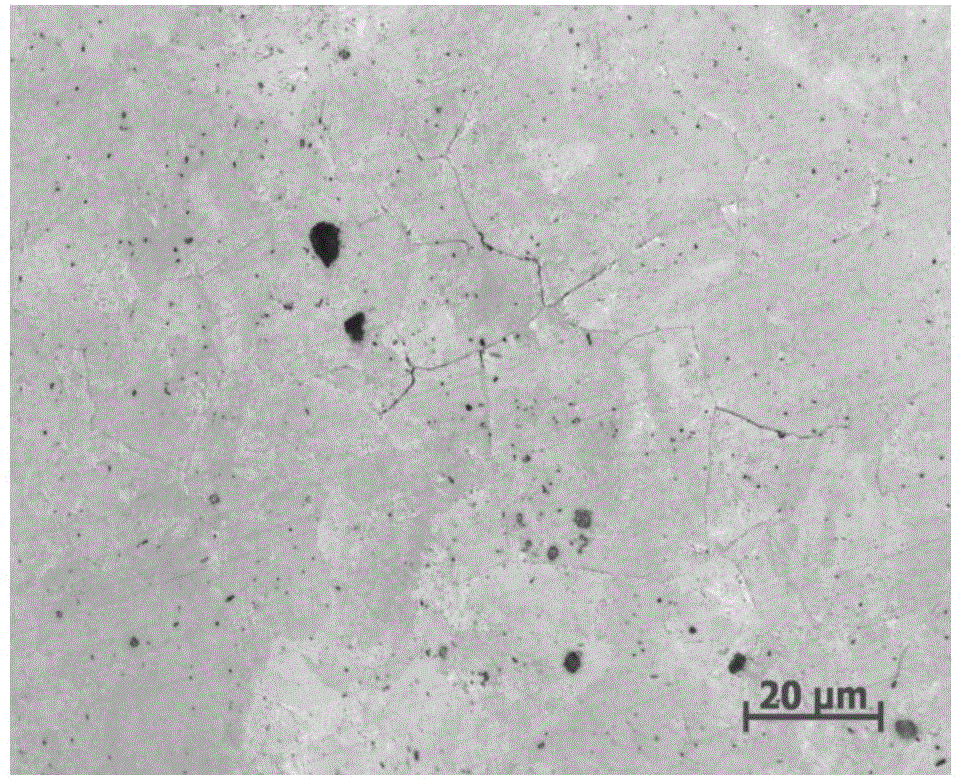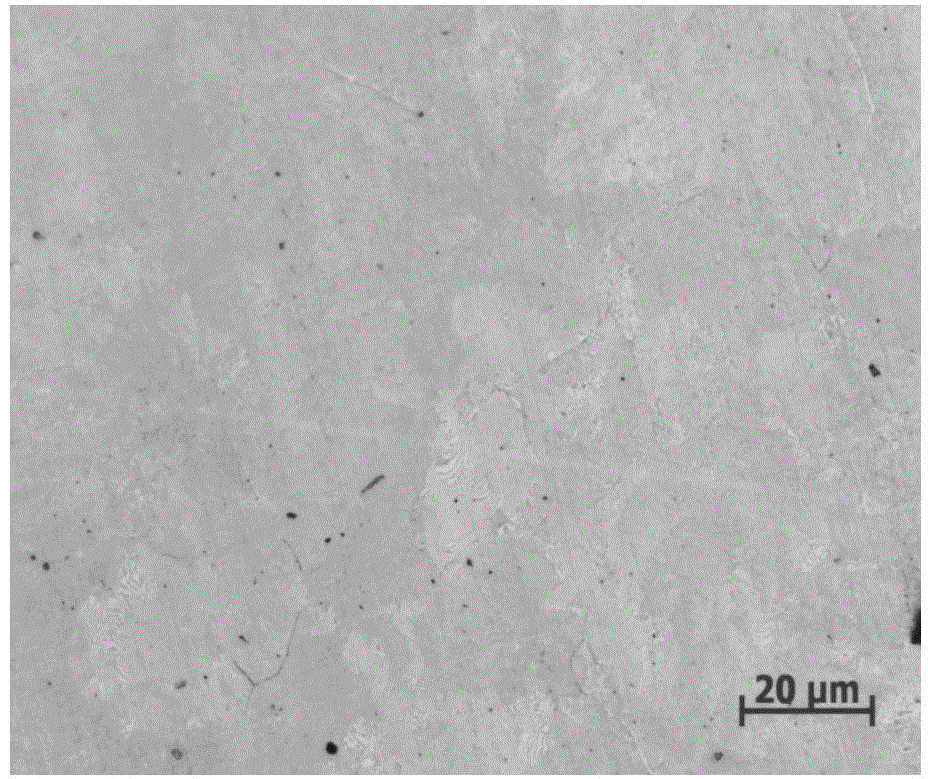Control method for reducing network cementite of steel wire rod for cord thread
A technology of cementite and wire rod, which is applied in the field of steel rolling, can solve the problems of influence and solution measures not mentioned, not mentioned, flexible operation on site and no basis for temperature setting, etc., to reduce drawing and joint broken wires, The effect of reducing the network cementite structure
- Summary
- Abstract
- Description
- Claims
- Application Information
AI Technical Summary
Problems solved by technology
Method used
Image
Examples
Embodiment 1
[0022] Heating furnace heating system:
[0023] Heating section temperature / ℃ Temperature of soaking section / ℃ soaking time / min Rolling temperature / ℃ Phosphate removal water pressure / MPa 1100 1140 60 1060 10
[0024] The finishing rolling process adopts 8-stand continuous rolling, and the area reduction rate of each pass is shown in the table below:
[0025] sorties 1 2 3 4 5 6 7 8 hole pattern oval round oval round oval round oval round Area reduction rate 22.0% 18.1% 21.8% 18.0% 20.5% 16.6% 23.2% 18.6% elongation factor 1.282 1.221 1.277 1.220 1.257 1.200 1.302 1.283
[0026] The finish rolling entrance temperature is controlled at 930-940°C, and the finish rolling exit temperature is controlled at ≤1040°C.
[0027] The pass area reduction rate of sizing after finishing rolling is shown in the table below:
[0028] sorties 1 2 3 4 hole pattern oval roun...
Embodiment 2
[0034] Heating furnace heating system:
[0035] Heating section temperature / ℃ Temperature of soaking section / ℃ soaking time / min Rolling temperature / ℃ Phosphate removal water pressure / MPa 1080 1120 70 1040 8
[0036] The finishing rolling process adopts 8-stand continuous rolling, and the area reduction rate of each pass is shown in the table below:
[0037] sorties 1 2 3 4 5 6 7 8 hole pattern oval round oval round oval round oval round Area reduction rate 22.0% 18.1% 21.8% 18.0% 20.5% 16.6% 23.2% 18.6% elongation factor 1.282 1.221 1.277 1.220 1.257 1.200 1.302 1.283
[0038] Or the finish rolling entrance temperature is controlled at 950±10°C, and the finish rolling exit temperature is controlled at ≤1060°C.
[0039] The pass area reduction rate of sizing after finishing rolling is shown in the table below:
[0040] sorties 1 2 3 4 hole pattern oval rou...
PUM
 Login to View More
Login to View More Abstract
Description
Claims
Application Information
 Login to View More
Login to View More - R&D
- Intellectual Property
- Life Sciences
- Materials
- Tech Scout
- Unparalleled Data Quality
- Higher Quality Content
- 60% Fewer Hallucinations
Browse by: Latest US Patents, China's latest patents, Technical Efficacy Thesaurus, Application Domain, Technology Topic, Popular Technical Reports.
© 2025 PatSnap. All rights reserved.Legal|Privacy policy|Modern Slavery Act Transparency Statement|Sitemap|About US| Contact US: help@patsnap.com


